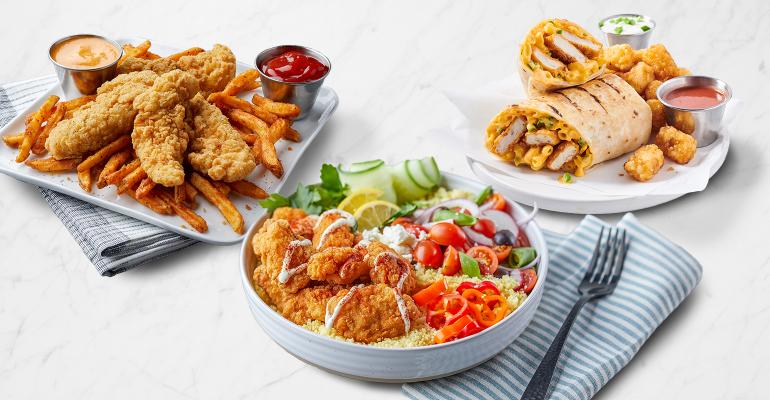Sponsored by Tyson Par Fried
In the current labor market, where many restaurants are understaffed, and finding and training new employees is harder than ever, operators need product solutions that bring efficiencies to the kitchen and streamline execution.
Foodservice operators report that labor issues are among the most pressing challenges they face, trailing only rising food costs and general inflation, according to a report from Datassential on the state of the industry. The report, called One Table, found that 38% of foodservice operators cited recruiting and hiring as among their most pressing challenges, and 36% cited labor costs. The challenges are especially acute in the kitchens of the nation’s restaurants, where labor attrition during the pandemic was widespread.
“We have fewer people to execute in the back-of-the-house, less time to train them, and we’re still dealing with turnover,” said Mark Brandau, associate director, research and insights, Datassential, during a recent webinar discussing the One Table report.
Labor saving is critical
In this environment, sourcing items that minimize prep time in the kitchen and simplify the overall cooking process are more important than ever. More than half (57%) of restaurant operators surveyed in the One Table report say labor-saving items have become especially important to them in the current environment. Other attributes that restaurant operators say they are prioritizing include versatility (46% of operators cite this as important), quick-cooking (22%), customizable (18%), and par-cooked (13%).
“There’s a real appetite to move toward more convenience-oriented products because of the current environment,” said Jack Li, executive chairman, Datassential, during the One Table webinar.
Versatility is especially important, as operators can drive efficiencies from cross-utilizing ingredients across different menu items and dayparts. This can help minimize inventory levels and optimize cost structures.
“The more mileage an operator can get out of every category they buy from, the better,” said Brandau.
Products that can be used in multiple dishes also allow operators to impart their creativity and generate excitement by creating new menu items. At a time of rising prices, innovation remains critical for the foodservice industry to differentiate from retail food offerings, said Li.
Operators need ingredients that provide the best of both worlds—ease of preparation, and versatility across menu items.
Value-added chicken products offer solution
Partially prepared items, such as Tyson Red Label®, NAE Uncooked Authentically Crispy chicken breast filets, provide a solution that saves time and labor while delivering a crispy and delicious product.
Compared to freshly prepared, these filets also minimize food-safety risks and eliminate some of the clean-up that making fried chicken from scratch entails.
When paired with a choice of sauces, condiments, and toppings, par-fried “made to order” chicken products offer diners the ability to customize their orders, and at the same time offer operators the ability to keep their menus fresh and exciting. They can be cross-utilized in different dishes and recipes for LTOs or recurring specials, in addition to having a regular place on the menu.
Value-added chicken also tends to generate minimal waste, reduce labor hours spent on breading and clean-up, and provide a longer shelf life.
The enduring popularity of fried chicken, and in particular the fried chicken sandwich, highlights the important role that fried chicken can play on operators’ menus. These portable, hand-held items deliver a combination of texture and flavor that appeals to consumers and drives traffic to your restaurant.
Topped with different cheeses, sauces, and other ingredients, such as avocado, bacon or mushrooms, for example, sandwiches featuring fried chicken can also serve as a blank canvas for a variety of dishes. Consider allowing customers to choose their own toppings to suit their taste preferences, or menu a couple of options and rotate others in as LTOs.
By starting out with a high-quality, juicy and flavorful chicken product, such as the Tyson Red Label® Authentically Crispy chicken breast filet, operators can stand out from competitors. It provides the consistency, ease of preparation, and versatility that today’s foodservice kitchens demand.
Visit Tyson Foodservice to learn more about how par-fried chicken and Tyson Red Label® Authentically Crispy chicken breast filets products can drive efficiency and innovation in your foodservice operation.



